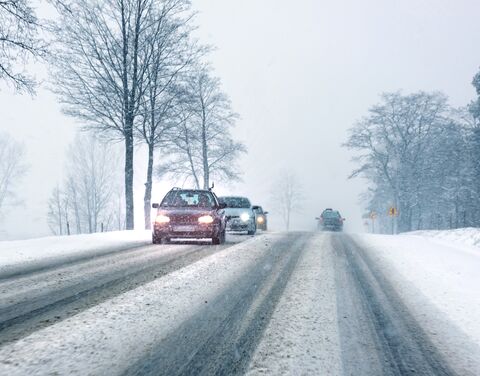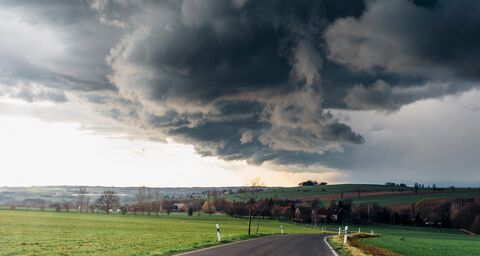
Snow, salt, and dirt pose the biggest dangers to driver assistance systems
The winter months can bring driver assistance systems right up against their limits. Dirt and snow can interfere with cameras and sensors – causing them to fail altogether in extreme cases. We’ll tell you what you need to look out for when using driver assistance systems so that they function correctly, thereby helping prevent accidents.
Snow, salt, and dirt: Red flags for driver assistance systems
Nowadays, many vehicles use driver assistance systems to scan the traffic around them and apply intelligent solutions to assist drivers in a variety of situations, thereby also increasing road safety. These systems “read” traffic using cameras and sensors that can be impaired in winter conditions. Just like our own, the “eyes” of these assistance systems have to be free of ice, snow, and dirt as well.
What problems can occur with driver assistance systems?
1. Park assist
Today, state-of-the-art cars are fitted with an active parking assistant that works using ultrasound. Ice and snow can distort the distance measurement function. The system always tells the driver that the remaining distance is smaller than it is, so that damage can be avoided in most cases.
2. Automatic dimmed headlights
Many new vehicles have automatic headlight control systems that activate dimmed headlights when it gets dark. In foggy conditions, however, the sensors for these lights don’t always function reliably and can be even more of a problem in heavy rain or snowfall.
3. Night vision systems
Night vision systems use thermographic or infrared cameras to create a schematic image of the area in front of the vehicle; more recent systems also alert drivers to the presence of people in the area. These cameras are generally installed in the vehicle bumper and can get covered with dirt in bad weather.
4. Rain sensors
If windshield wipers suddenly jerk into action for no apparent reason, it’s a sign that the rain sensor is covered in dirt. The sensor is usually located at the top of the windshield, right in front of the rearview mirror.
5. Reversing assist camera
Rain and snow can cover the lens of the reversing assist camera with a layer of salt or dirt, thus blurring the image displayed on the dashboard monitor. Another possible cause, however, is when the car’s windows fog up after moving from the warmth into the cold. This often happens when exiting a parking garage, for example.
6. Lane keep assist and distance control systems
Lane keep assist and distance control systems cannot function reliably unless the camera in front of the rearview mirror has an unobstructed view of the road ahead. So the same problems apply here as with a rain sensor – except that active driver assistance systems require a better-quality image than the ones that control windshield wipers.
7. Blind-spot assist
Two different types of blind-spot assistants are in widespread use: camera and radar sensor technology. Whereas vehicles equipped with radar sensors experience fewer problems with dirt, the solutions using camera technology are more susceptible.
Most of the problems mentioned can be solved automatically by simply cleaning the sensors or cameras. A last point to note is that potential driver assistance system defects are recognized automatically and an active warning is generally sent to the driver. These systems thus provide reliable support even in winter, helping to increase safety and prevent accidents.





